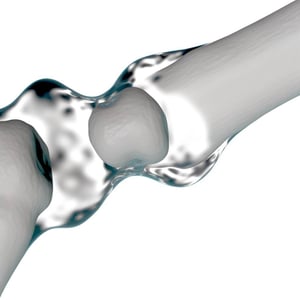
Viscosity of Simulated Synovial Fluids
Application Note Download
Synovial fluid is the lubricant found in the joints, which also supplies nutrients to the cartilage. The rheological properties of synovial fluid are of significant interest due to the fluid’s role as a lubricant and shock absorber. Joint fluid is primarily composed of proteins, hyaluronic acid, phospholipids, and cholesterol (Martin-Alarcon & Schmidt, 2016).
Since the hyaluronic acid present typically has a molecular weight in the range of 1 to 7 million, normal or healthy synovial fluid is shear thinning with a high viscosity at low shear rates (Ludwig et al. 2014). Joint fluid from people with arthritis is consistently lower in viscosity and less shear thinning or even Newtonian in extreme cases.
The change in viscosity is attributed to the compositional variations that occur with the disease. Those with arthritis tend to have an increase in protein concentration but a decrease in the level and molecular weight of hyaluronic acid (Fam et al. 2007). The correlation between the synovial fluid composition and the rheological response is valuable when diagnosing and developing therapeutics.
Download the application note to learn more!
.jpeg?width=300&name=Woman%20scientist%2c%20documents%20and%20hands%20writing%20_575258496-min(1).jpeg)


.png?width=200&height=58&name=RheoSense%20Logo%20(REGISTERED).png)



